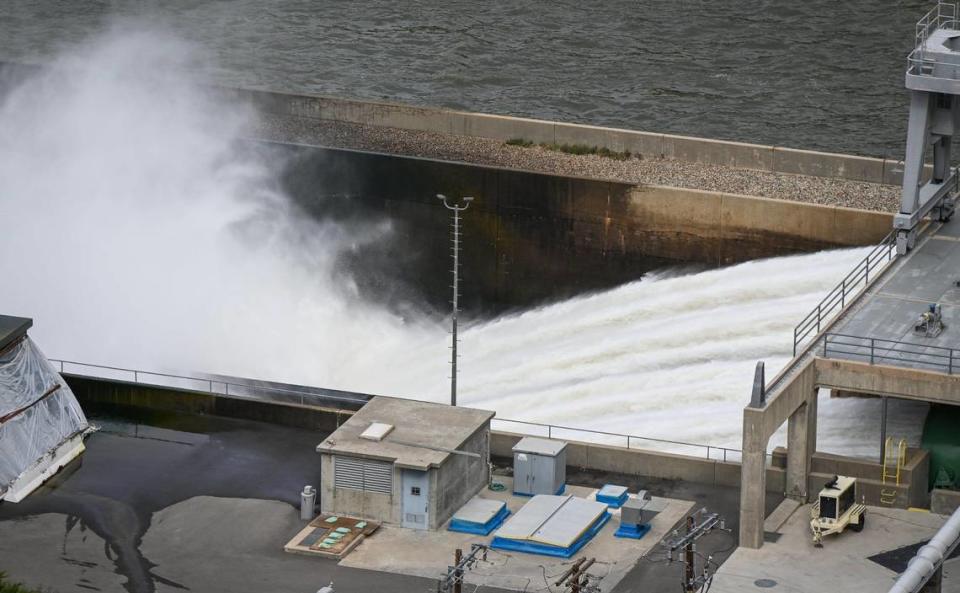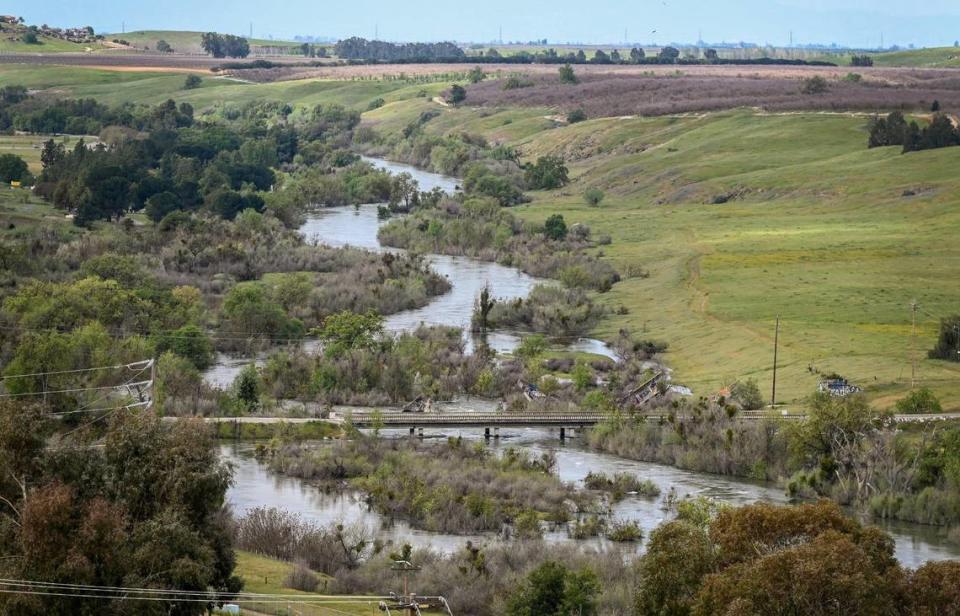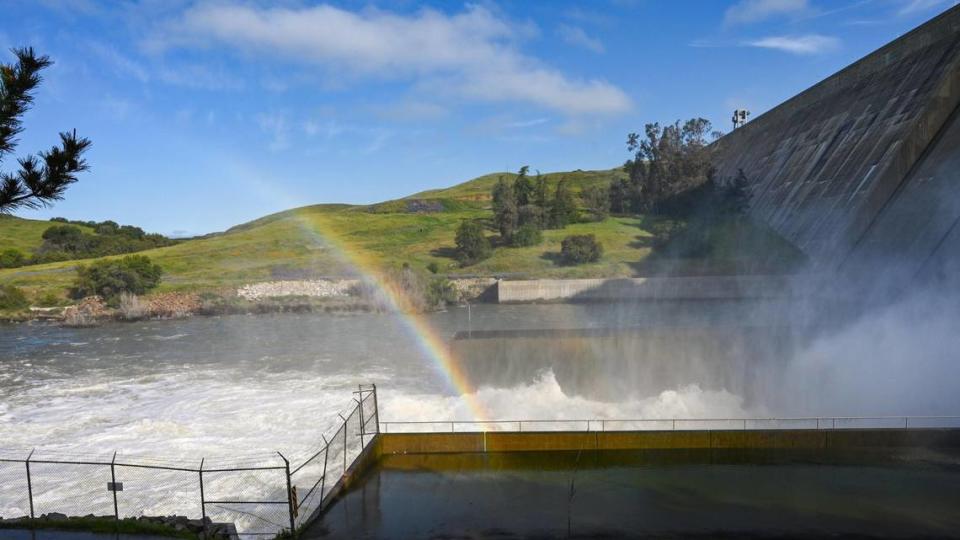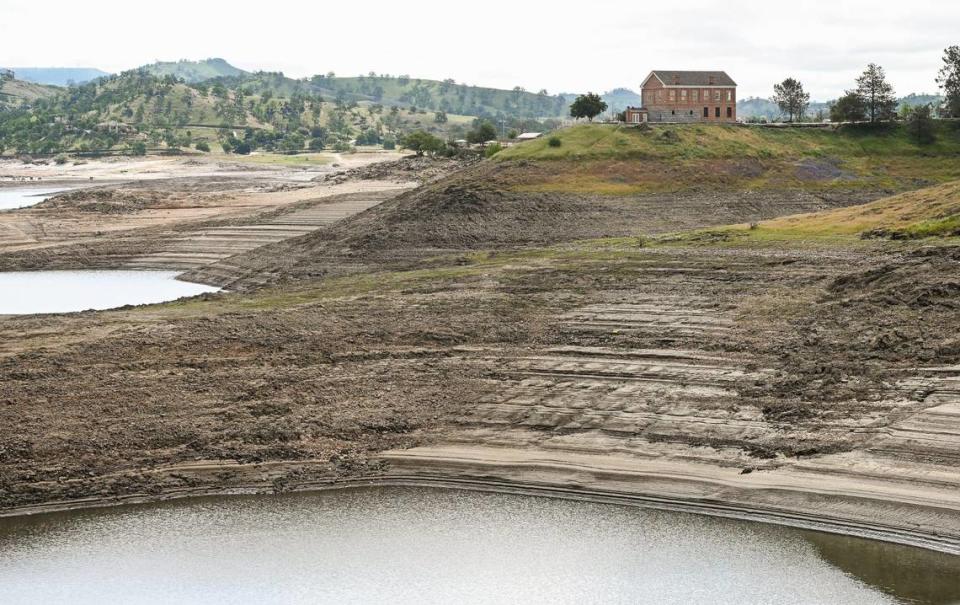Central Valley congressman calls for more water storage, less environmental regulation
- Oops!Something went wrong.Please try again later.
- Oops!Something went wrong.Please try again later.
Republican Congressional representatives from across California and the U.S. made their way to Fresno and Tulare counties Tuesday for a hearing on a pair of water bills, including one introduced earlier this year by Rep. David Valadao, R-Hanford.
Valadao’s bill, H.R. 215, is dubbed the Working to Advance Tangible and Effective Reforms (WATER) for California Act and has the backing of all of California’s Republican congressmen. The legislation is aimed at providing increased water storage in California reservoirs as well as order large-scale federal and state river and canal systems to operate under relaxed environmental rules established under the Trump administration.
Representatives in the Valley on Tuesday include Bruce Westerman of Arkansas, chair of the House Natural Resources Committee; Water, Wildlife & Fisheries subcommittee chairman Cliff Bentz of Oregon; Rep. Paul Gosar of Arizona, and California GOP representatives John Duarte of Modesto, Doug LaMalfa of Oroville and Tom McClintock of Elk Grove.
The group started their day with a morning tour at Friant Dam on the San Joaquin River northeast of Fresno; the gathering continued with a tour of a dairy in Tulare County, followed by a field hearing at the International Agri-Center in Tulare to hear from an invitation-only list of witnesses from an assortment of water and irrigation districts, agricultural interests, and the state Department of Fish & Wildlife. Rep. Jim Costa of Fresno was the lone Democratic congressman at the hearing.
“While we cannot control the weather, we can control the laws and regulations that govern our water and ensure we are using the most common sense possible,” Valadao said at the subcommittee hearing in Tulare. “If we don’t take steps to address some of the misguided policies that prioritize fish over people here in California, the entire country will be impacted.”
The tour of Friant Dam and the hearing in Tulare come as California confronts the ongoing potential for flooding from a series of winter atmospheric river storms that have drenched the state and piled up a record snowpack in the Sierra Nevada. That snow is expected to create additional flood problems as it melts, conceivably overwhelming the ability of dams in the central and southern Sierra Nevada to contain it.

Westerman described the hearing as an opportunity to “explore the need to finish proposed water storage projects and contemplate new surface and groundwater storage opportunities in California and elsewhere in the West to help drought-proof and flood-proof the region.”
Valadao’s bill, he added, “will not only focus on the need for more storage but also help bring about water supply certainty by codifying federal operations plans that were built on sound science.”
What the Valadao bill would do
H.R. 215, if it were to pass, would restore controversial biological opinions issued by federal agencies under the Trump administration relaxing protections for endangered species in the Sacramento-San Joaquin Delta. It would apply those rules to both the federal Central Valley Project as well as the state Water Project, operated not by the federal government but by the state of California.
The bill also calls upon state and federal water agencies to operate “in a manner that improves water supply reliability and … provide the maximum quantity of water supplies practicable” to an array of water contractors for agricultural, urban and industrial uses relative to the Trump-era environmental rules – rules which were challenged by the state and by the Natural Resources Defense Council in separate lawsuits over allegations that they violated state and federal Endangered Species Act laws.
The Biden administration is in the process of developing new biological opinions to govern Central Valley Project under a court-approved interim operating plan that has drawn criticism from farm groups and from many of California’s House Republicans.
A proposed enlargement of Lake Shasta by raising Shasta Dam in Northern California to provide about 634,000 acre-feet of water storage would become eligible for federal funds through 2028, as would the proposed 1.5 million acre-foot Sites Reservoir in the Sacramento Valley and other smaller projects in the western U.S. “The Shasta Dam raise has been effectively halted due to Democratic opposition,” a House Natural Resources Committee memo stated.
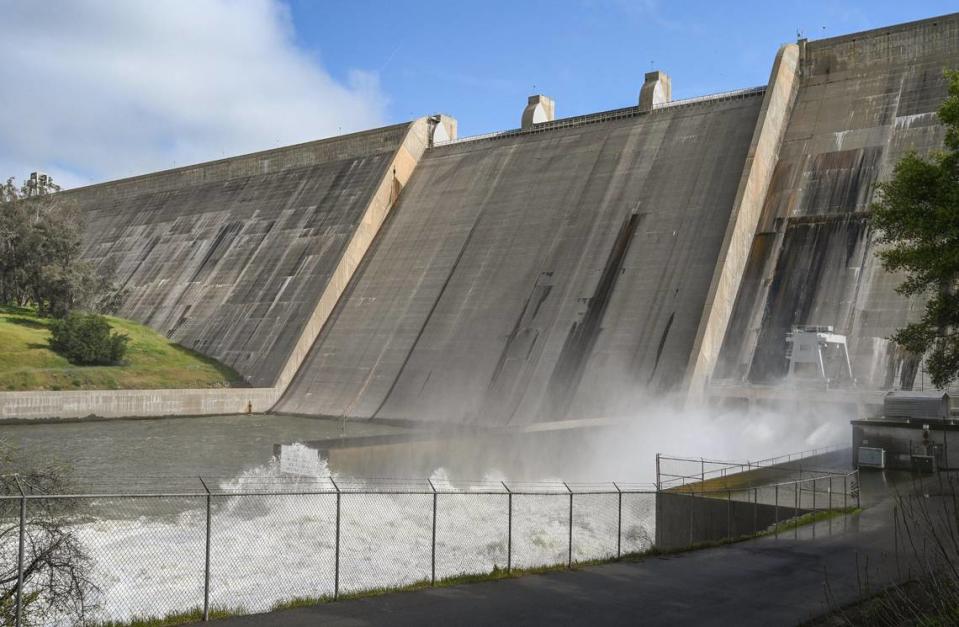
Not much more than a ‘dog and pony show’
Friends of the River, a Sacramento-based environmental advocacy group, expressed skepticism in advance of Tuesday’s hearing, describing it as “basically a staged dog and pony show to a friendly audience, so don’t expect to hear an objective evaluation” of Valadao’s bill, board member Doug Maner wrote in an email Monday.
“We think this is a horrible piece of legislation that seeks to take more water than what falls from the sky,” Maner added, “which means it will be taken from other water users.”
Ron Stork, a senior policy adviser with Friends of the River, said some of the provisions of the bill are inconsistent with the reality of California’s climate by attempting to fulfill water obligations for contractors, “and that’s not even possible with the exception of years like 1983 or 2023, when providence really shows up and gives you more water than you can possibly use.”
“It’s an attempt to say these supplies, which almost always have shortages, won’t have shortages,” he added.
Westerman, the committee chairman, and testifying witnesses said Tuesday afternoon that the state’s water shortages in normal years are not a result of a lack of water, but of policy.
“This could be solved. The state of California, God and nature produce enough water to meet all your needs,” Westerman said. “It’s just a matter of managing that water and building the proper infrastructure to use it.”
“We’re seeing all that water that’s going into the ocean today because of the lack of infrastructure,” he added, “water that could be saved for those tough times.”
Others testifying in favor of Valadao’s bill, as well as a second bill, included Hanford dairy farmer Tony DeGroot; Friant Water Authority CEO Jason Phillips; Chris White, executive director of the Los Banos-based San Joaquin River Exchange Contractors Water Authority; Tulare Irrigation District general manager Aaron Fukuda; Jeff Sutton, general manager of the Tehama-Colusa Canal Authority; and William Bordeaux, a director of the Westlands Water District.
All testified in favor of Valadao’s bill as well as H.R. 872, dubbed the FISH Act introduced by Rep. Ken Calvert of Corona.
Officials from the federal Interior and Commerce departments, as well as from the state Department of Fish and Wildlife, did not attend the hearing but submitted written testimony opposing the Valadao and Calvert bills.
Duarte, the congressman from Modesto, noted the absence of the state and federal water agencies from the hearing, denouncing them as “lords of scarcity pushing working families to the edge of privation“ through their environmental and water policies.
Costa, the lone Democratic representative at the hearing, was more measured in his remarks. “Water in California has always been complicated and controversial, and some people want to reverse the order to controversial and complicated. It’s both,” he said.
“The fact of the matter is, it’s hard. All of this is hard,” he added. “I think we have a consensus that we need to fix our broken water system. We need to create sustainability that we don’t have today.”
